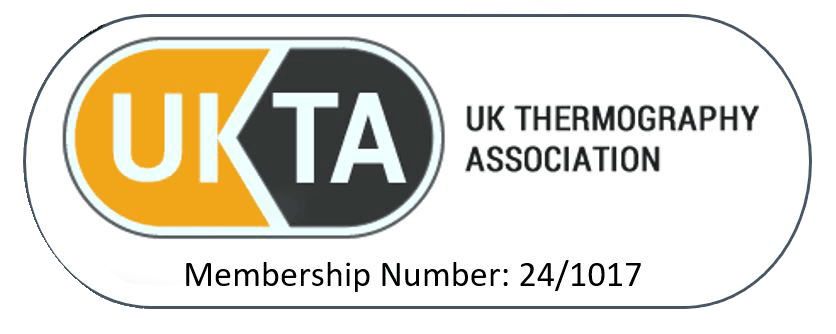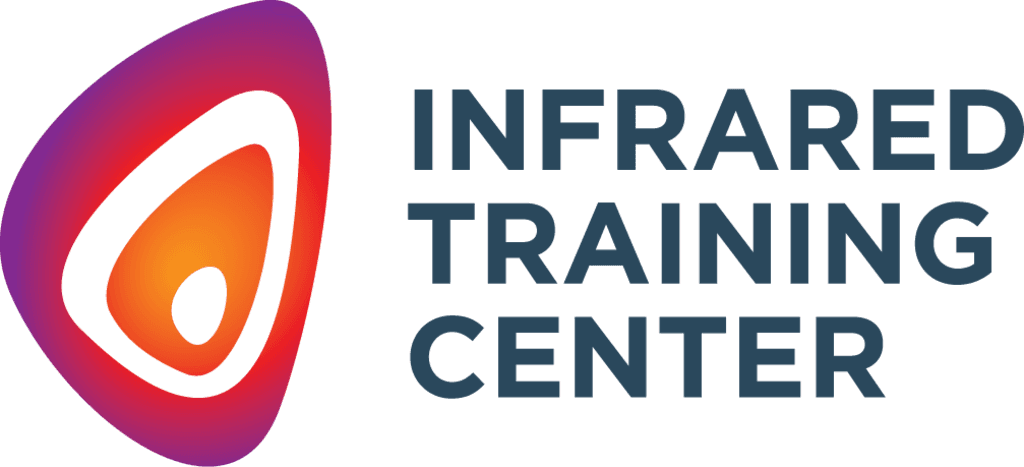Welcome to our Frequently Asked Questions (FAQs) page! Here, we provide clear and concise answers to the most common questions about our thermal imaging and thermography services. Whether you’re curious about how thermography works, its benefits for detecting issues in buildings, or how to prepare for an inspection, this page has you covered. Our goal is to ensure you have all the information needed to make informed decisions about our services. If you can’t find the answer you’re looking for, please feel free to contact us directly—we’re here to help!
Building Thermography
A thermographic survey is required under BREEAM to assess thermal efficiency, insulation continuity, and air leakage in a building’s fabric. It helps to ensure the building meets energy efficiency and thermal comfort standards outlined in BREEAM credits Ene 01, Hea 04, and Man 04. The survey helps to identify heat loss, thermal bridging, and air leakage, ensuring the building performs as expected before final certification.
Thermal imaging detects temperature differences in materials, which helps identify hidden moisture behind walls, floors, and ceilings. Water retains heat differently than dry materials, making it clearly visible on infrared scans. This non-invasive method allows for early detection of damp issues before they cause structural damage or lead to mould growth.
No, thermal imaging is completely non-invasive. Unlike traditional damp inspections that may require drilling holes or removing plaster, thermography simply scans surfaces to detect temperature variations. This means the inspection process is fast, clean, and does not cause damage to your walls, ceilings, or floors.
Yes, we provide tailored solutions for both residential properties and large-scale commercial buildings.
Certified thermographers ensure accurate diagnostics, professional-grade reporting, and compliance with industry standards.
Thermal imaging can detect damp, water ingress, air leaks, electrical faults, and even pest infestations hiding behind walls.
BREEAM thermographic surveys are essential for property developers, architects, facilities managers, housing associations, and commercial building owners. Any organisation aiming for BREEAM certification must provide a thermographic report as part of their energy performance and thermal efficiency assessment. These surveys are also beneficial for existing buildings undergoing refurbishment to improve sustainability and compliance.
Thermographic surveys contribute to BREEAM credits under:
- Ene 01 (Energy Efficiency) – Ensures insulation and airtightness meet energy performance requirements.
- Hea 04 (Thermal Comfort) – Verifies internal temperature stability for occupant comfort.
- Man 04 (Commissioning & Handover) – Confirms correct installation of insulation and airtightness measures in the building fabric.
If major thermal anomalies are detected, rectification may be required before these credits are awarded.
Thermal imaging is extremely accurate when used by a certified thermographer. It detects early-stage moisture buildup, allowing for targeted interventions. However, infrared scans alone do not confirm the exact type of moisture issue—additional assessments like humidity readings or moisture meters may be used alongside thermography for a comprehensive diagnosis.
Contact us via our website or phone to schedule a free consultation and discuss your specific requirements.
Thermal imaging does not directly detect mould, but it identifies moisture-prone areas where mould is likely to develop. By locating cold spots, condensation zones, and damp surfaces, thermography pinpoints the conditions that encourage mould growth. Early detection allows for preventative action, helping to reduce health risks and prevent expensive mould remediation.
A thermographic survey can reveal heat loss through poorly insulated walls and roofs, thermal bridging at structural junctions, air leakage from windows and doors, and insulation defects. These findings are critical for meeting BREEAM thermal efficiency requirements and ensuring a building’s energy performance aligns with design specifications. If issues are found, corrective actions must be taken before final certification.
Yes, our IEC-compliant reports provide documented proof of moisture-related damage, which can be valuable for insurance claims, landlord disputes, or property assessments. Insurance companies often require thermal imaging evidence to verify the extent of water damage before approving claims, making our surveys an essential tool for property owners.
You can book a BREEAM thermographic survey by contacting a Level 3 Certified Thermographer who specialises in BS EN 13187-compliant inspections. At Thermography Services (UK) Ltd, we provide fast, reliable, UK-wide surveys, ensuring compliance with BREEAM certification standards. Simply call us at [Insert Contact Number] or request a quote online, and our team will schedule your survey at the earliest available date.
Yes, thermal imaging is completely non-invasive and does not require any physical disturbance to the building structure.
After the survey, you will receive a detailed report outlining thermal images, moisture-prone areas, and expert recommendations. If damp is detected, we can suggest further investigations or corrective measures such as improving ventilation, repairing leaks, or upgrading insulation. The report can also be used to support insurance claims or property assessments.
BREEAM (Building Research Establishment Environmental Assessment Method) is the world’s longest-established sustainability assessment method for buildings. It evaluates a building’s environmental performance across categories such as energy efficiency, water use, materials, waste, and occupant well-being. Achieving BREEAM certification demonstrates a commitment to sustainable building design, lower carbon emissions, and operational efficiency, making it a key standard for developers, investors, and businesses aiming to improve sustainability credentials.
If a building fails a BREEAM thermographic survey, the identified issues must be rectified before certification is granted. This may involve improving insulation, sealing air leaks, or modifying construction details to reduce thermal bridging. A follow-up thermographic inspection is typically required to verify that all remedial work has been successfully completed before final approval.
Yes, we conduct thermal imaging surveys for residential, commercial, and heritage properties. Commercial buildings, such as offices, warehouses, and rental properties, benefit from regular damp inspections to prevent costly repairs, comply with health and safety regulations, and maintain indoor air quality. We offer tailored surveys to meet business-specific needs.
A thermal imaging damp survey typically takes 30-60 minutes, depending on the size of the property and the complexity of the issue. Larger homes or properties with extensive damp problems may take longer. After the survey, a detailed report with thermal images, moisture analysis, and recommendations is usually provided within 24 to 48 hours.
By identifying areas of heat loss, such as poorly insulated walls, thermography helps property owners take targeted actions to conserve energy.
Thermal imaging uses infrared technology to detect temperature differences on surfaces, revealing issues like heat loss, moisture, or structural defects.
Absolutely! Thermography is ideal for verifying insulation, checking air tightness, and ensuring construction standards are met in new builds.
Yes, thermal imaging is highly effective at detecting hidden leaks from plumbing, roofs, and external walls. By identifying temperature differences, it can reveal water intrusion before visible damage occurs. This method is particularly useful for detecting slow leaks behind walls or under flooring that could lead to long-term structural damage.
The duration of a thermographic survey depends on the size and complexity of the building. Most surveys can be completed in a few hours, with reporting and analysis taking an additional 3-5 working days. Larger or more complex buildings may require multiple survey sessions to capture all necessary thermal data under optimal environmental conditions.
BREEAM thermographic surveys should be conducted during colder months when there is a sufficient internal-to-external temperature difference (typically a minimum of 10°C). The best time for a survey is late at night or early in the morning, avoiding solar radiation effects on building surfaces. This ensures accurate detection of insulation defects, air leakage, and thermal bridging.
Booking an inspection is easy—simply contact us via our website or call our team to schedule a fixed-price thermal imaging damp survey. We will arrange a convenient time for the survey and provide a full infrared assessment with a comprehensive report. Get in touch today to protect your home or business from hidden moisture issues!
A BREEAM thermographic survey must comply with BS EN 13187, the European standard for thermal performance assessment of buildings. This ensures that the survey is conducted using controlled conditions, calibrated infrared cameras, and proper temperature differentials (typically a minimum of 10°C between internal and external conditions). The survey must also be carried out by a Level 3 Certified Thermographer to guarantee accuracy and compliance.
Solar Panel Thermography
Industry recommendations suggest annual solar panel inspections, particularly for commercial installations and high-performance systems. According to UK government guidelines, regular maintenance, including thermal imaging assessments, helps extend the lifespan of PV systems and maintain peak efficiency. Some manufacturers require inspections every 1-2 years to maintain warranty coverage.
Yes, thermography reveals hotspots caused by failing connections, ensuring prompt repairs.
PID is a gradual performance degradation in solar panels caused by voltage leakage within the system. It leads to electrical losses and reduced efficiency. Thermal imaging detects PID by identifying uneven temperature gradients across the panel surface, indicating areas where electrons are migrating incorrectly, causing energy loss and long-term system failure.
A typical residential solar PV inspection takes 30-60 minutes, depending on the system size and complexity. Commercial installations may take longer, especially if multiple arrays need surveying. After the inspection, a detailed IEC-compliant report with thermal images and fault analysis is typically delivered within 24 to 48 hours.
Insurance providers require thermal imaging reports to assess the risk of fire hazards, electrical faults, and system degradation in solar PV installations. Without a certified inspection, some insurance companies may increase premiums or deny coverage due to the potential for undetected safety risks. An IEC-compliant survey ensures regulatory compliance and helps protect your investment.
Yes, our surveys adhere to industry standards, including IEC 62446-3:2017, ensuring reliable and accurate assessments.
Yes, we have a Level 3 Certified Master Thermographer qualification and CAA-certified ‘Operational Authority’ drone operators permission for unparalleled expertise.
Absolutely. By detecting inefficiencies, you can optimise your solar system for maximum energy output.
Yes. Shading and dirt accumulation cause temperature variations across the panel surface, reducing overall performance. Thermal imaging can highlight areas of underperformance, allowing homeowners to take corrective actions such as cleaning, repositioning, or replacing affected panels to restore maximum energy generation.
We use advanced infrared cameras and drones to capture high-resolution thermal images.
Thermal imaging identifies hotspots, cracked cells, faulty bypass diodes, delamination, water ingress, loose electrical connections, and Potential Induced Degradation (PID). These issues can reduce energy output, increase fire risks, and lead to expensive repairs if left unaddressed. Early detection helps homeowners and businesses optimise performance and prevent costly failures.
Thermography helps optimise energy production, identify risks, and extend the lifespan of your PV system.
Shading causes uneven heating, leading to energy loss. Thermography identifies shading patterns for corrective measures.
IEC 62446-1:2016 is the international standard that defines the required electrical tests, documentation, and reporting for verifying the performance and safety of grid-connected photovoltaic (PV) systems. It is most commonly applied during commissioning, routine maintenance, or fault investigations — ensuring that the electrical characteristics of a solar installation meet design expectations and operational safety requirements.
As part of our optional string-level electrical testing service, we carry out non-invasive tests in accordance with IEC 62446-1 to assess the DC-side health of your solar system. These tests include:
- Open-Circuit Voltage (Voc) – Verifies correct string voltage and helps detect module or connection faults.
- Short-Circuit Current (Isc) – Confirms expected current output under standard irradiance.
- Insulation Resistance – Checks the electrical insulation of PV strings relative to ground to identify degraded cables or potential safety risks.
- Polarity Verification – Ensures correct string wiring and identifies reverse connections.
- String Continuity – Confirms uninterrupted connectivity through the string.
These electrical tests are typically performed from accessible locations such as DC isolators or inverter string terminals, no roof access or system disassembly is required. When combined with thermal imaging inspections under IEC 62446-3, this provides a comprehensive picture of both electrical and thermal performance, all delivered through our structured Survey → Analysis → Reporting methodology.
The results are compiled into a clear, standards-aligned report designed for your installer, O&M provider, or insurer to interpret and act on.
Simply visit our website and select an inspection package nd complete the booking form. It’s fast, easy, and secure!
Thermal imaging uses infrared technology to detect temperature variations on the surface of solar panels, identifying faults and inefficiencies.
Thermal imaging works for all PV systems, including residential, commercial, and industrial setups.
For accurate results, the IEC 62446-3:2017 standard requires:
- Clear sunny sky conditions with at least 600W/m² of solar irradiance.
- Minimal wind speeds to avoid heat dissipation from convection cooling and affecting thermal readings.
- No Rain, Moisture, Dew, Snow, Mist to avoid heat dissipation from convection cooling and affecting thermal readings.
These conditions ensure precise thermal imaging and prevent false readings due to environmental interference.
Yes, an IEC 62446-3:2017 compliant thermal inspection provides documented proof of faults such as hotspots, cracked cells, or manufacturing defects. Many solar panel warranties require thermal imaging evidence to support claims, allowing homeowners to secure free repairs or replacements from manufacturers.
No — all electrical testing is performed non-invasively from ground level using industry-grade instruments. We do not access internal inverter components or climb onto the roof. This ensures safety and minimal disruption during inspection.
IEC 62446-3:2017 is the international standard for thermal imaging inspections of solar photovoltaic (PV) systems. It ensures that all thermal assessments are conducted using certified thermographers, calibrated infrared cameras, and optimal environmental conditions. This standard helps detect hotspots, electrical faults, and degradation, preventing energy losses and safety hazards such as fire risks and overheating components.
We offer fixed-price package, so there are no surprises. Use the links on our website for pricing details. We accept payments by bank trasnfer or card payment via ‘Stripe’.
We recommend annual inspections to ensure optimal performance and address potential issues early.
All electrical tests follow the requirements of IEC 62446-1:2016 and measurement principles from IEC 61829 for I-V curve tracing. This ensures your results are suitable for use by contractors, insurers, or O&M teams.
Booking is easy! Simply contact us via our website or call our team to schedule a fixed-price IEC-compliant thermal inspection. We will arrange an inspection at a suitable time with optimal conditions, providing you with a detailed thermal analysis and report to ensure your solar system remains safe, efficient, and fully insured.
Yes. Thermal imaging can identify cracks, hotspots, or other issues caused by storms, even if they aren’t visible. Naturally, missing, moved or dislodged panals are always reported
Electrical & Mechanical Thermography
Any business with commercial-scale electrical systems can benefit from thermography. This includes offices, warehouses, factories, retail units, and industrial facilities. Whether you operate a single site or a nationwide network, annual thermographic inspections provide a vital layer of risk reduction, compliance, and operational assurance.
While not guaranteed, many insurers look favourably on businesses that carry out annual thermography inspections. By demonstrating proactive risk management and providing certified reports, businesses may benefit from reduced premiums, improved renewal terms, or simplified claims processes in the event of an incident.
Yes. We offer tailored pricing for businesses operating across multiple sites or with large numbers of distribution boards. Volume pricing makes it more cost-effective to roll out thermographic inspections at scale while ensuring each site receives the same Level 3 certified quality of service. Contact us for a customised quotation based on your portfolio size.
Insurers typically require an annual inspection for compliance purposes, but some high-risk or heavily loaded systems may benefit from more frequent surveys. Annual thermographic inspections provide a balance between cost and risk management, ensuring that developing faults are caught before they become critical.
A Level 3 Thermographer brings the highest level of training and certification available in thermography. This ensures correct interpretation of anomalies, professional documentation, and reports that are recognised by insurers, auditors, and regulatory bodies. Using a lower-level operator risks misinterpretation, which could invalidate insurance compliance.
Our certified reports include high-resolution thermal images of each distribution board, annotated findings, and categorised risk levels (from minor to critical). Each issue is documented with clear explanations and recommendations. This report not only satisfies insurance compliance but also supports your planned preventative maintenance strategy.
The time required depends on the number of distribution boards, sub-panels, and switchgear on site. A small business may only require a few hours, while larger facilities with multiple panels can take a full day or more. We provide clear scheduling in advance to minimise disruption and ensure full coverage of your systems.
No. Thermographic inspections are carried out live, under normal operating loads, to ensure accuracy. Panels are opened by a qualified electrician, and our Level 3 Certified Thermographers conduct the imaging safely without interrupting your business operations. This makes the process both efficient and non-disruptive.




